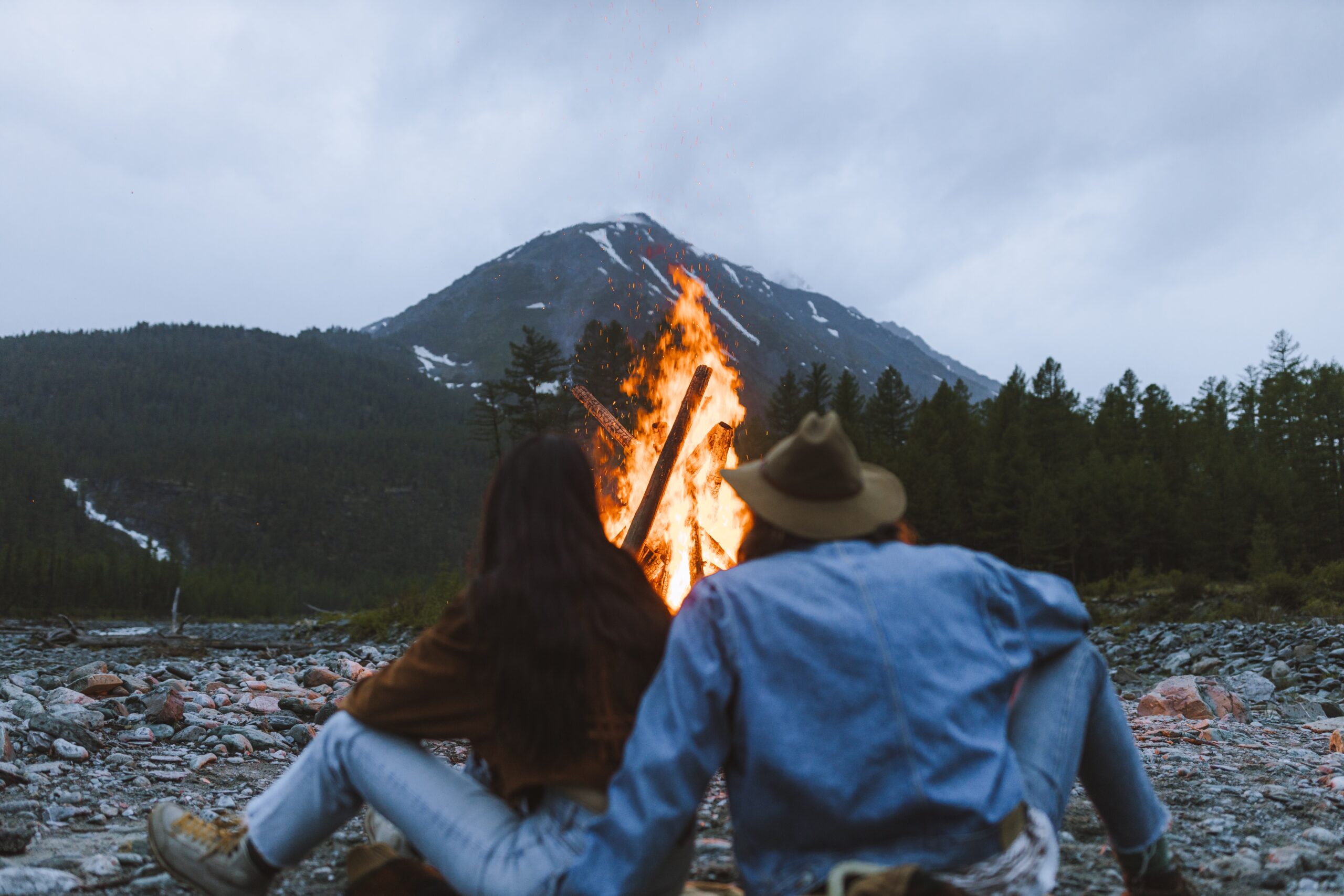Mastering the Art of Building Fires Safely: A Guide for Outdoor Enthusiasts
As the sun sets and the chilly night air starts to settle in, there’s nothing quite as reassuring and cozy as gathering around a crackling fire. I have had some of my best moments around a campfire, after a long day on the job site or some sunburnt hours on the lake. There’s something about the crackle of the fire, and the stars overhead, that really starts to bring conversations to life. Humans were smart and lucky enough to have mastered the creation of fire thousands of years ago, and it has impacted everything from our gut biomes and diets, to the clothes we wear, and even the survival of our species.
Whether you’re camping in the great outdoors, having a backyard bonfire, or simply enjoying a peaceful evening on the beach, building a fire safely is essential. It’s important to remember that fire, one of humankind’s first tamed elements, can be very harmful to our environment if not properly supervised. In this guide, we will cover the key steps and tips to help you master the art of building fires safely.
Step One: Choose your location wisely
Before starting your fire, it’s crucial to select the right spot. Most harmful fires are started by cigarettes and candles, near flammable objects. We can avoid disaster by being mindful of our surroundings.
Look for a clear space away from any overhanging branches, dry grass, or brush that could catch fire easily. Keep a safe distance from tents, buildings, or anything else that could be damaged by heat or sparks. It’s also a good idea to check the local fire regulations and restrictions, especially during dry or windy conditions. As a general rule, I like to ensure that there is nothing flammable within 8 feet of the fire’s location, and at least 12 feet upwards. I use my good ol’ boots to clear out any leaves and dig a little trench around the fire for added protection. Sand or gravel are just some of the materials that ensure fire cannot spread away from its intended location. It is always helpful to have a source of water nearby, such as a large bucket, to extinguish the fire at the end of the night.
Step Two: Gather the right materials
You need fuel to create heat, or so my family friend said when I asked why he ate so much. Then he farted on me.
To build a fire, you’ll need three main components: tinder, kindling, and fuel. Tinder is the material that catches fire easily and includes dry leaves, twigs, or newspaper. Kindling consists of small sticks or thin pieces of wood that will sustain the initial flame. Lastly, fuel refers to larger pieces of firewood that will keep the fire burning steadily.
Tinder (the kind with actual hot content): Cotton balls catch fire very quickly and burn fast, so they are very helpful for the initial flame. You can add some fuel to them like baby oil or vaseline which will increase their burn time. The same can be done with steel wool, which might be easier to light even when wet. Typically, old newspapers, phonebooks, photos of your ex, or high school report cards work just fine as tinder. Leaves are a little bit trickier and might produce a lot of smoke if they are still somewhat green, so I tend to only use these for toilet paper.
Kindling: I believe this comes from the greek word for being kind to your fire and/or begging it to light so you can seem like you know what you’re doing and not completely lost. Please light. Please.
I like to break up some dry sticks and use those, they really work well. Make sure you have a lot, and of many shapes and sizes from little itty bitty to definitely 7 inches, I swear, okay fine just round up. I’m a little lazy so I generally just go around and pick up as many sticks as I can find and leave them on the outskirts of the fire grounds, and break them up into uneven piles from small to large. You can also use an axe to split your firewood into small pieces, around 5 inches tall and two inches wide are a good size, but again, variations can help the fire grow. If you really enjoy fire making, you can strip the bark off your kindling which will help the fire catch more easily and reduce smoke.
Fuel: not literal fuel. No, seriously, anyone who has dumped gasoline on a fire has almost immediately regretted it. It’s not safe, it’s doesn’t even look cool, and most importantly of all it’s way too expensive. My brother learned this when he dumped a portion of a jerry can on our fire to help it burn one night, and it basically exploded. Not only that, but it kept relighting – after dumping water, peeing on it, and even burying it in sand. I’d wake up for the next two nights to see the fire had come back to life, which is very concerning when you live 20 metres from a forest and an hour from the nearest fire department. Just don’t do it.
Anyway, using large logs is the traditional form of fuel. Just make sure they’re not wet or have a lot of moss or dark bark on them to avoid excessive smoke.
Step 3: Create a solid fire bed
Before lighting the fire, prepare the ground by clearing away any debris, vegetation or drunk friends. Dig a shallow pit or use rocks to form a fire ring to contain the fire and prevent it from spreading. This will also help protect the soil underneath from intense heat damage which can kill nearby plants, trees, and animals (without the fire even touching them). You can use sand, gravel, or rock as the base if possible.
Step 4: Start small and build it up
I know you know this, but heat rises. The strategy for creating the fire is to have the heat and flames rise into the fuel so it catches fire as well. After the fire is going, the embers at the base can be much hotter than the actual flames, which help the fire stay burning.
Begin with a small pile of tinder arranged loosely. Using our varying sizes, start with the smallest and most flammable pieces, such as our cotton balls, in the middle. Bunch some slightly larger pieces of kindling in a teepee or tent structure above the flammable tinder, with the tinder in the middle and the kindling on the outside, resting on one another. If you have some string, it helps to tie the tops of the kindling together so they don’t fall. Use matches or a lighter to ignite a stick or long piece of paper, and put it into the centre of the tent, igniting the cotton or tinder. Once it begins to burn, you can help fan it (gently at first) to feed it oxygen. The flames will rise gradually. Once the tinder and small kindling is burning well, add more kindling to the tent, maintaining the structure. If the tent has collapsed, don’t worry, just add the kindling in a criss-cross pattern horizontally over the burning material. Don’t suffocate the middle though, because you want the fire to rise. Slowly add more and bigger fuel, making sure to leave enough space for air to circulate.
Step 5: Monitor and control the fire
Keep a close eye on the fire at all times and avoid leaving it unattended. You can regulate the size and intensity of the fire by adding or removing fuel accordingly. Make sure to keep enough water or sand nearby to extinguish the fire completely before leaving the area.
Conclusion
Building a fire safely is not only about warmth and ambiance but also about being responsible and respectful towards the environment. By choosing the right location, gathering the right materials, and maintaining control throughout, you can enjoy the allure of a fire while minimizing any potential risks. So, the next time you gather around a fire, take these tips to heart and revel in the simpler joys of life safely. As always, enjoy getting your hands dirty!

